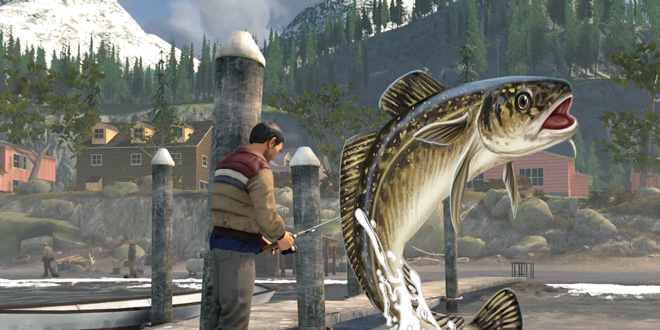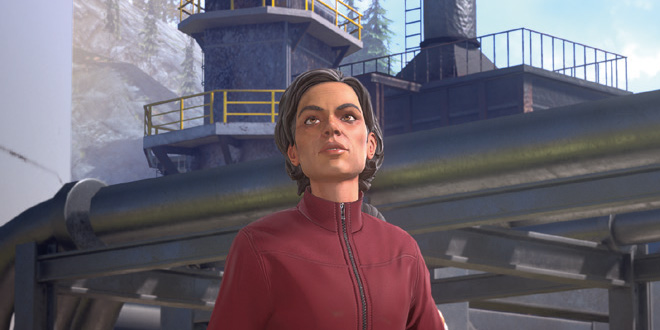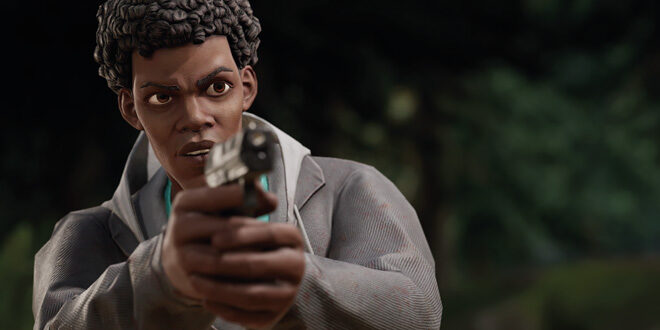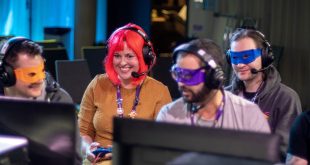 Shawn Kittelsen, VP of creative development for games at Skybound Entertainment tells zombie apocalypse survivor Vince Pavey all about the latest digital experience to star their shambling undead hordes.
Shawn Kittelsen, VP of creative development for games at Skybound Entertainment tells zombie apocalypse survivor Vince Pavey all about the latest digital experience to star their shambling undead hordes.
How would you describe The Walking Dead: Last Mile to someone who didn’t take part?
The Walking Dead: Last Mile was a four-month long MILE (Massively Interactive Live Event) depicting a coastal Alaskan community struggling to survive post-apocalyptic threats of walkers, weather, and human nature. The fates of our characters, including who lived and who died, were decided by the audience through daily bids, and the results of bids were recapped in weekly live streams hosted by Yvette Nicole Brown and Felicia Day. There were no reboots, no do-overs, so once the audience locked in a bid, they forever left a mark in the canon of The Walking Dead comics. The experience was a blockbuster collaboration between Genvid Entertainment (creators of the MILE concept), Skybound, Facebook, and several development and production partners.
Why the comic book universe and not the TV universe?
There’s no wrong way to enjoy The Walking Dead, but Skybound is the home to the original comic book universe. That’s where all our interactive projects are set, from the Telltale adventures to TWD Saints & Sinners and TWD: Last Mile.

How do you even get started on designing a game like this?
With many hands and many brains! No one had ever made a MILE with a story of this scope before. It was a huge undertaking that required coordination across myriad disciplines, from game development and narrative design to live hosted production and animation. For Skybound’s part, I think we laid a good foundation for other teams by developing a clear scenario to frame the whole thing: the fictional community of Prosper Landing, Alaska, has splintered into two factions, Villagers and Plant Workers, with competing ideas about how to use their limited resources to survive the coming winter. It was up to the audience to decide whether these factions would find ways to cooperate or fall into conflict.
When did you realise you were on to something? Was there an “a-ha!” moment?
When we saw the outcomes of community bids trending toward collaborative choices more than self-interested and divisive choices, which reaffirmed my faith in humanity. The audience genuinely seemed to care about keeping every character alive. They were invested in bringing the two factions at Prosper Landing together. That felt like a real win.
Was designing the narrative a bit like making a Choose Your Own Adventure book – were there only so many paths the players could go down?
A bit, although there was more variability within individual scenes than you would get branching paths. Bid outcomes rippled out to change smaller details as well as large set pieces. Tracking all of those outcomes, and ensuring that each new day’s content was consistent with all previous decisions, was something we could not have accomplished without the narrative designers at Terrible Posture Games maintaining a comprehensive “source of truth” to coordinate variables across all production teams.

How involved was The Walking Dead creator Robert Kirkman?
Robert Kirkman blessed everything from the story concept to the art direction. He’s one of the most in-demand creators in entertainment, especially with upcoming seasons of Invincible in production for Amazon Prime, so while Robert approves everything at the high level, we have a team of experts at Skybound who ensure that every detail, every line, is produced with the authenticity and spirit of his original comics.
How did The Walking Dead: Last Mile come about?
Genvid Entertainment created the concept and technology behind MILEs, and produced their first project, Rival Peak, for Facebook. Coming off the success of Rival Peak, they approached Skybound with the idea of a bigger, more story-driven approach set in the world of The Walking Dead. TWD has conquered every other medium, and Skybound loves to play on the frontier of interactive storytelling, so it made sense to see what we could bring to this new genre.
What monetisation model did the game use?
Last Mile was completely free to play and watch on Facebook. No purchases or microtransactions whatsoever.
How many game designers and writers were on staff for the season?
More than I can count! MILEs start with the word massive, so there were dozens of designers and writers on the project, between our dev partners at Genvid Entertainment, Pipeworks Studio, the narrative team at Terrible Posture Games, the live stream production crew here at Skybound, and the animation crew at Cyber Group Studios.

How much turnaround did the team have for coming up with and implementing new scenes for the game?
Turnaround periods were tight. The time between locking in a bid decision and producing a finished CG render and other story content was a matter of days. We built as much as content as we could in advance, but we were working right up until the final hours of the MILE to keep up with the audience.
Did anything about the MILE go in a direction you didn’t expect?
So many things! We didn’t know what to expect from the audience, but like I mentioned before, seeing the community rally to keep all the survivors alive was awesome. Of course, survival is never easy in The Walking Dead, so we still lost plenty of survivors along the way. At one point it looked like the entire cast of main characters would be wiped out and all would be lost. But in the final days, a few key decisions saved the last few survivors. That was thrilling.
How did you make sure user tasks and mini-games were fun, and didn’t end up just feeling like daily busy work between the streams with Yvette Nicole Brown and Felicia Day?
We ran the first month of the season, the Prologue, as a “Beta Access” period in order to iron out bugs and identify which activities were the most fun and engaging for the audience to play. Gathering that feedback helped us make adjustments to maximize the fun. We revised everything from the bidding interface to mini-games and travel activities, tweaking the experience all the way up through the finale. Since this is one of the first MILEs, we took every opportunity to learn from the audience.
How did you prevent cheating to gain extra “Influence Points”?
Our partners at Genvid would know more about this, but the minigames and Influence Point system were designed to reward engagement in a way that would make cheating extremely difficult, if not impossible. The team regularly monitored user activity for anomalies and whenever it seemed like someone was exploiting a feature, fixes and updates were made.

Was there a limit to what someone could feasibly earn then, or could people with more time to invest be more influential than others?
There were some limits placed on how much IP could be earned through different activities, but the design was meant to reward users who wanted to see, play, and experience everything Last Mile had to offer. We had some power users who had outsize influence in some bids, but it was impossible for any single user to tilt the whole MILE in their favor.
How do you retain your users when doing an online event like this? What motivators are in place to come back? Are they game design based? Narrative based? — Both?
Both. The story had to be compelling, the characters had to be relatable, the game design had to be fun, the bids and user interface had to be accessible. Any confusion or disruption to the experience that bothered one user would inevitably bother thousands more. That made constant tweaking and tuning a necessity, so that as the months continued on, the experience got better and better, rather than just repeating any early mistakes.
Are there plans for a second season?
We’ll see! This may have been the Last Mile for Prosper Landing, but it’s definitely not the last MILE. Genvid is pioneering this new form of storytelling and we’d love to tell more stories with them, in the world of The Walking Dead and beyond.

 MCV/DEVELOP News, events, research and jobs from the games industry
MCV/DEVELOP News, events, research and jobs from the games industry




